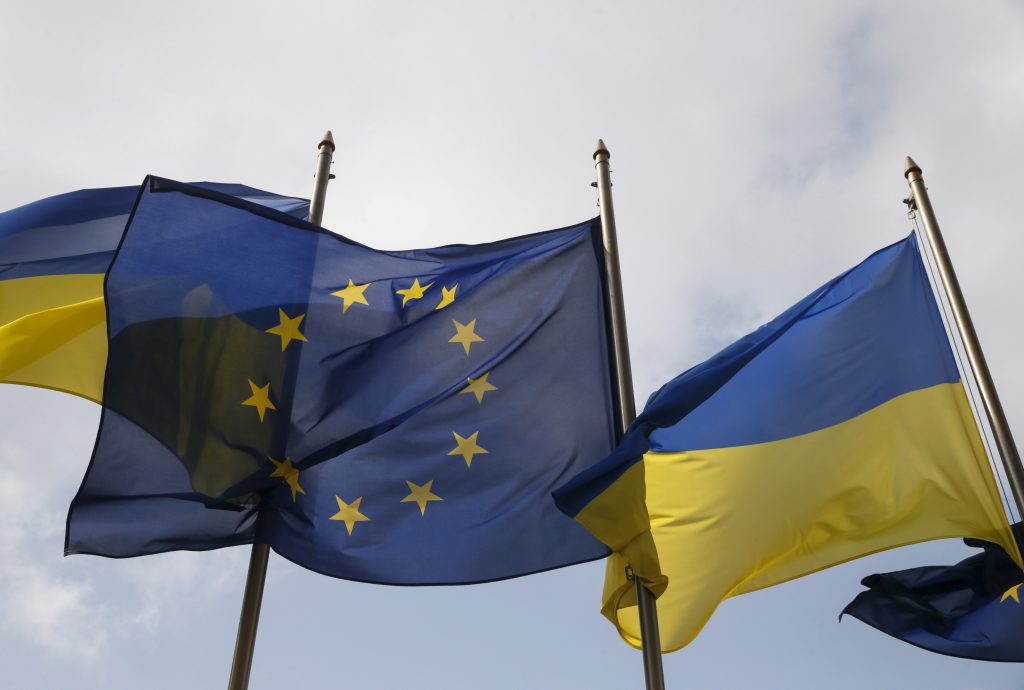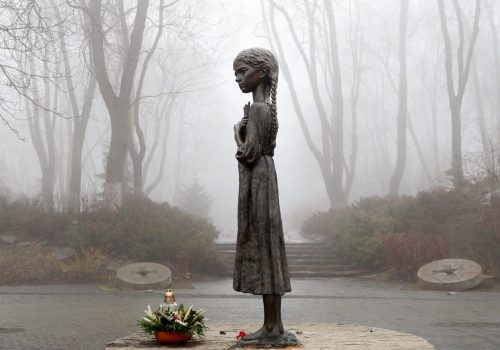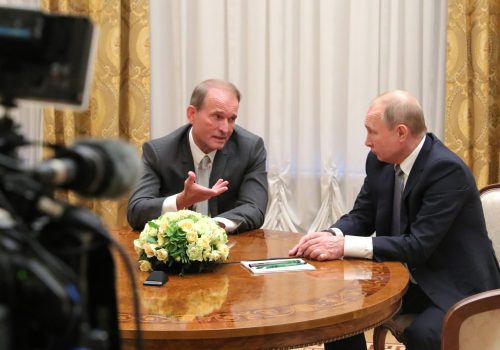Most people currently associate eastern Ukraine’s Donbas region with war. My job, as I see it, is to make the Donbas a synonym for opportunities once again. This economically important region, which the Kremlin claims as part of the so-called “Russian World”, actually has a strikingly cosmopolitan heritage and deep ties to the rest of Europe. This common history can help inspire a new era of European investment that will speed Ukraine towards recovery, limit the scope for further Russian aggression, and bring economic benefits to the entire continent.
The development of the Donbas as an industrial center began in the nineteenth century. European investors, industrialists, and entrepreneurs played a key role in this process, bringing new technologies and all the trappings of modern business culture to the region. In the second half of the 1800s and the early years of the twentieth century, hundreds of companies with foreign capital operated in the Donbas, laying the foundations for the region’s growth as an industrial hub.
The early history of the region’s largest city, Donetsk, offers the most famous example of this international involvement. From its foundation in 1869 until 1924, Donetsk was called Hughesovka in honor of its founder, the British industrialist John Hughes.
Many more Donbas towns and cities also owed their establishment and early expansion to men like Hughes. The growth of Lysychansk in Luhansk Oblast was closely tied to Belgian industrialist Ernest Solvay, while British businessman Charles Gascoigne is considered the founder of Luhansk itself. Many towns and villages throughout the region trace their roots back to Greek and German colonists, while the small town of Novhorodske just outside Donetsk was known until 1951 as New York.
Stay updated
As the world watches the Russian invasion of Ukraine unfold, UkraineAlert delivers the best Atlantic Council expert insight and analysis on Ukraine twice a week directly to your inbox.
As Ukraine looks to reestablish control over the occupied parts of the Donbas, now is a good time to reflect on the region’s international origins.
The Ukrainian government remains steadfast in our support for the Minsk peace process and Normandy Format negotiations, but this does not represent the full extent of our strategy towards moving beyond the current conflict.
We believe that reintegrating the Donbas means transitioning away from Russian war towards European opportunity. Much as European investment transformed the nineteenth century Donbas into one of the continent’s industrial engines, a second wave of international engagement in eastern Ukraine can now create a new era of growth opportunities.
This process needs to start gathering momentum as soon as possible in areas of the Donbas currently under Ukrainian government control. It can then spread to the Russian-occupied areas following their liberation.
The scale of the task should not be underestimated. In 2013, the Donbas accounted for over 25 percent of all goods exported by Ukraine, while the economies of Donetsk and Luhansk oblasts represented 14.4 percent of Ukraine’s national GDP.
The exact cost of Russian aggression since 2014 is incalculable, of course. Any reckoning must begin by recalling the over 13,000 lost lives and millions of people displaced by the conflict. In material terms, there are a number of specific losses that can be identified, including the destruction of major infrastructure objects such as Donetsk and Luhansk airports. However, this is just the tip of the iceberg.
Entire residential districts and vast amounts of private property have been destroyed, along with untold numbers of plants, factories, and businesses. There are also a range of less tangible costs to consider such as dwindling social capital, lost business networks, escalating environmental problems, and so much more.
In 2019, experts from the German Institute for Economic Research (DIW Berlin) calculated that the 2014-2016 drop in GDP per capita in Donetsk and Luhansk oblasts was between 43 percent and 52 percent. Meanwhile, a report by the Vienna Institute for International Economic Studies noted that post-conflict relief and recovery efforts would require approximately USD 21.7 billion. Other studies have produced similarly astronomical price tags.
Given the scale of the damage inflicted on the Donbas, it is futile to talk merely in terms of “reconstructing the region”. Sadly, it is all too clear that Russian aggression has destroyed the Donbas of the pre-war era. It has wiped out half the region’s economy, shattered its infrastructure, and had devastating demographic consequences. There can be no going back to the way things used to be.
Instead, we should focus on creating a new economy. A reinvented and revitalized Donbas can become a hub for fresh approaches to manufacturing and production. The tragedy of the war has reduced Ukraine’s industrial heartlands to ruins, but this devastation also creates room for the kind of bold innovations and original thinking that are not always possible in more developed economic environments.
Continued financial injections from the Ukrainian state budget and ongoing donor assistance will be crucial in this process. The Ministry for the Reintegration of Temporarily Occupied Territories, which I lead, is actively working to engage foreign aid.
In July 2020, we completed formalities for a EUR 64 million French loan to ensure the supply of clean drinking water to residents of Donbas front line city Mariupol. Earlier, we signed a EUR 25 million contract with German development bank KfW for a project to provide housing for displaced persons. By the end of the year, we expect to finalize a EUR 100 million credit from the World Bank to expand infrastructure and the agricultural sector in Luhansk Oblast.
This progress is both welcome and encouraging. Nevertheless, the many billions of dollars needed to give the Donbas a new beginning can only come from investors, who would naturally expect a generous return on their investments.
With this in mind, Ukraine is currently developing an ambitious new economic strategy for the east of the country. A key focus is the development of the parts of Donetsk and Luhansk regions currently under Ukrainian control. This approach is perhaps best described as a Ukrainian take on the notion of “special status” for the region, with the goal of transforming the investment climate and implementing a new economic model at the regional level.
There is every reason to believe that it is possible to attract large-scale investment to eastern Ukraine. After all, investors work in hot spots all over the globe. I have had dozens of conversations with foreign diplomats, representatives of international businesses, and Ukrainian investors. The state of the Ukrainian justice system is typically of far more concern than proximity to the front lines.
Our objective is to create a special investment regime in the Ukrainian-controlled part of the Donbas. We see the extension of international commercial arbitration rules to the region as an integral part of these plans. Additionally, the Ukrainian state should assume at least some of the insurance burden against the kind of political and military risks that are hard for investors to predict. To help make this approach sustainable, we envisage a special-purpose fund to encourage and assist investments rather than relying on donor aid.
Eurasia Center events

We expect to submit a Donbas economic development road map to the Cabinet of Ministers in September. It will then take an estimated six months to prepare the necessary bills. This will require expert input. Ideally, this input would come direct from potential future investors.
Above all, it is critical to set the right tone from the outset. This is not a matter of crisis relief for the Donbas, but a bid to create an advanced and innovative economic zone that can have a positive impact on the whole of Europe.
The timing of this initiative may be fortuitous. As Europe comes to terms with the current coronavirus crisis, many countries are recognizing the advantages of diversifying away from China and having high-quality production capacity closer to home. As one of the EU’s largest neighbors, Ukraine is ideally suited to fill this role, while the Donbas region has many of the specific attributes necessary to play a leading part.
With the Russo-Ukrainian War now in its seventh year, it is clear that the Russian interpretation of “special status” for the Donbas is unacceptable. Rather than helping to resolve the conflict, Moscow’s approach is tailor-made to precipitate the disintegration of Ukraine. The sooner this dead end model is discarded, the better.
A durable peace can only be achieved by creating a brighter future for the people of eastern Ukraine that undermines Russia’s ability to destabilize Ukrainian society. Unlike the Kremlin’s destructive vision, Ukraine’s goal of a new economic beginning for Donetsk and Luhansk oblasts will strengthen Ukrainian unity. It will also bring the rejuvenated regions closer to the rest of Europe and open a new chapter in a shared story of cooperation that dates back to the dawn of Donbas industrialization in the nineteenth century.
Oleksii Reznikov is the Deputy Prime Minister of Ukraine for the Reintegration of Temporarily Occupied Territories.
Further reading
The views expressed in UkraineAlert are solely those of the authors and do not necessarily reflect the views of the Atlantic Council, its staff, or its supporters.

The Eurasia Center’s mission is to enhance transatlantic cooperation in promoting stability, democratic values and prosperity in Eurasia, from Eastern Europe and Turkey in the West to the Caucasus, Russia and Central Asia in the East.
Follow us on social media
and support our work
Image: The EU and Ukraine flags flying in central Kyiv. (Photo: REUTERS)




